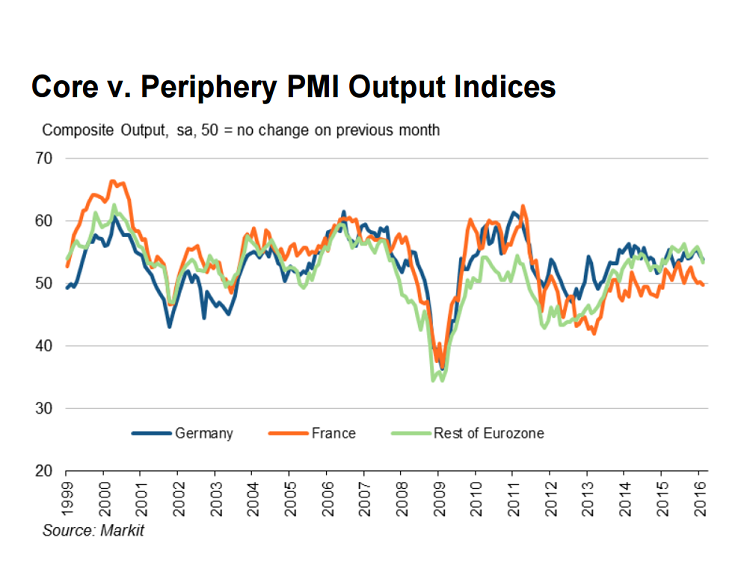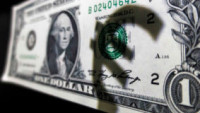
Activity in the 19-member Eurozone slowed to the lowest level since January 2015 in February. The flash reading of the Markit composite PMI fell to 52.7 in February from 53.6 the prior month, far below expectations of 53.3. The figure extends the weak start to the year, with output slowing for a second straight month.
The flash manufacturing PMI fell to a one-year low of 51.0 from 52.3 the prior month, falling short of expectations of 52.0. Services activity also grew at a slower pace with the flash reading declining to 53.0 from 53.6, below estimates of 53.3. Manufacturers saw weaker growth in new orders, while in the services sector, businesses were less optimistic about future activity. Another worrying trend in the latest PMI report was signs of increasing deflationary pressures as companies cut the prices for their goods and services to stay competitive.
In the euro area’s largest economy, Germany, the flash manufacturing PMI slowed notably to 50.2 – just above 50, which separates expansion from contraction. It compares with forecasts of 52.0 and a final reading of 52.3 for January. Services activity fared much better though as output growth increased to 55.1 on rising new business orders. This was slightly up on January’s 55.0 and above estimates of 54.7.
France also had a mixed month but it was manufacturing activity that saw an improvement, while services activity contracted. Flash manufacturing PMI increased to 50.3 in February from 50.0 previously, defying expectations that activity would contract slightly. However, services PMI dipped below 50 to 49.8, versus estimates it would stay unchanged at 50.3.
Today’s data increases the chances that the European Central Bank will announce a fresh round of stimulus measures at its next policy meeting in March. With many analysts already predicting another 10bps cut in the deposit rate to -0.40%, the ECB may surprise with further measures such as increasing the size of its asset purchase program.
One year on from the launch of the ECB’s €60 billion a month bond buying plan, quarterly growth in the Eurozone averaged just 0.3% in the second half of 2015. It is likely to slow to 0.2% in the first quarter of 2016 based on the PMI readings for the quarter to date. ECB Vice President Vitor Constancio hinted again on Monday of more easing in March if there’s evidence that the central bank won’t be able to achieve its 2% inflation target quick enough. Eurozone inflation edged up to 0.4% in January, but this was still significantly below the 2% target and could fall back again in the coming months given the fresh slide in oil prices.
The euro was down around 0.5% against the dollar on Monday as a combination of “Brexit” fears and further ECB easing from the weak PMI numbers put the single currency under pressure. The euro hit an intra-day low of 1.1055 dollars in mid-European session after falling from around 1.1110 dollar earlier in the day. It was steadier against the yen and the pound though at 125.18 yen and 0.7816 pounds.
Source: XM













